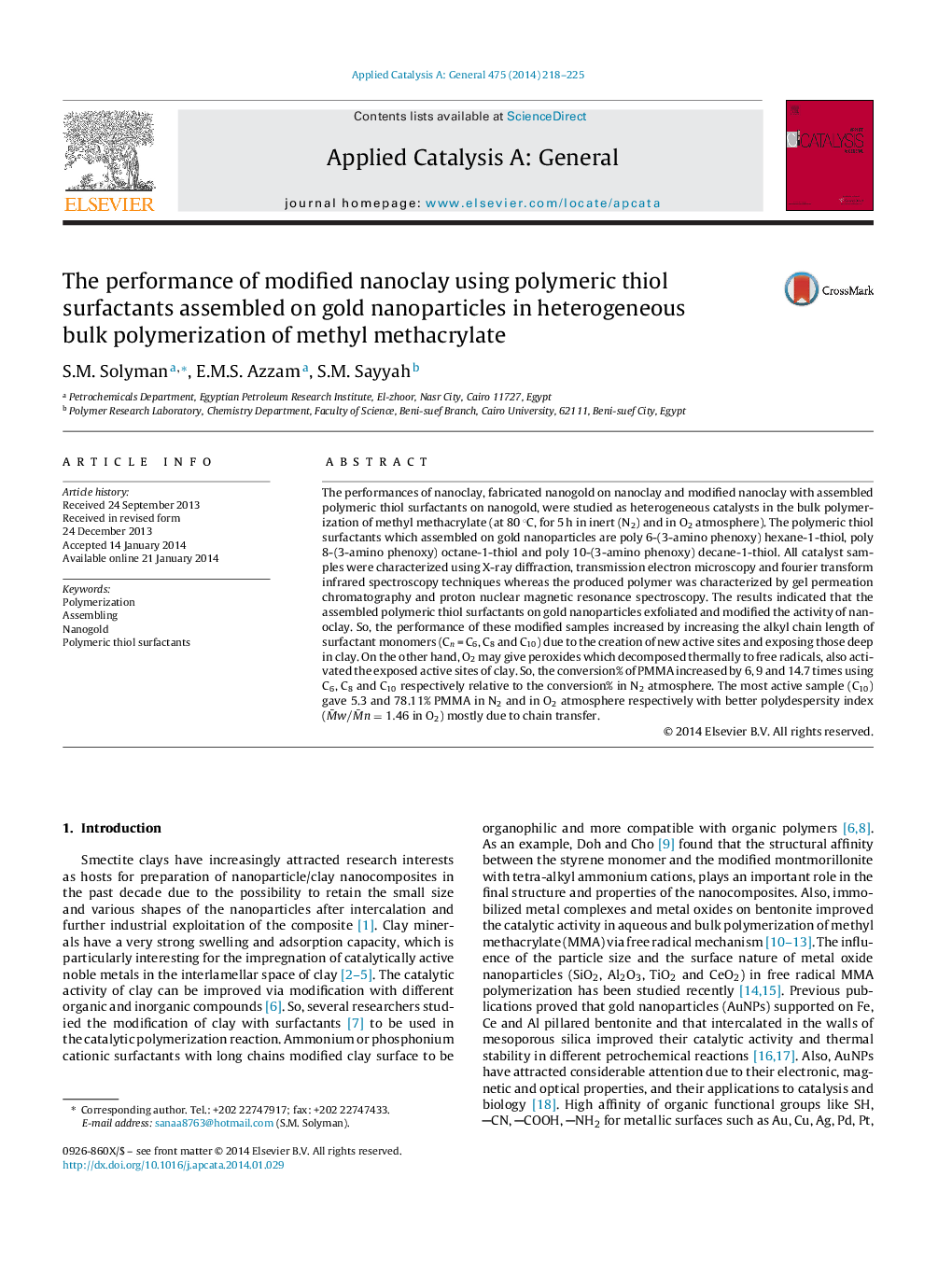| Article ID | Journal | Published Year | Pages | File Type |
|---|---|---|---|---|
| 39837 | Applied Catalysis A: General | 2014 | 8 Pages |
•The activity of modified nanoclay in bulk polymerization of MMA was studied.•The modifiers are the assembled polymeric thiol surfactants/gold nanoparticles.•Modification of nanoclay exfoliated its layers and exposed the deep active sites.•The conversion% increased in O2 depending on the alkyl chain length of thiol group.•These samples considered as heterogeneous catalysts in bulk polymerization reaction.
The performances of nanoclay, fabricated nanogold on nanoclay and modified nanoclay with assembled polymeric thiol surfactants on nanogold, were studied as heterogeneous catalysts in the bulk polymerization of methyl methacrylate (at 80 °C, for 5 h in inert (N2) and in O2 atmosphere). The polymeric thiol surfactants which assembled on gold nanoparticles are poly 6-(3-amino phenoxy) hexane-1-thiol, poly 8-(3-amino phenoxy) octane-1-thiol and poly 10-(3-amino phenoxy) decane-1-thiol. All catalyst samples were characterized using X-ray diffraction, transmission electron microscopy and fourier transform infrared spectroscopy techniques whereas the produced polymer was characterized by gel permeation chromatography and proton nuclear magnetic resonance spectroscopy. The results indicated that the assembled polymeric thiol surfactants on gold nanoparticles exfoliated and modified the activity of nanoclay. So, the performance of these modified samples increased by increasing the alkyl chain length of surfactant monomers (Cn = C6, C8 and C10) due to the creation of new active sites and exposing those deep in clay. On the other hand, O2 may give peroxides which decomposed thermally to free radicals, also activated the exposed active sites of clay. So, the conversion% of PMMA increased by 6, 9 and 14.7 times using C6, C8 and C10 respectively relative to the conversion% in N2 atmosphere. The most active sample (C10) gave 5.3 and 78.11% PMMA in N2 and in O2 atmosphere respectively with better polydespersity index (M¯w/M¯n=1.46 in O2) mostly due to chain transfer.
Graphical abstractFig. 2 TEM images of nanoclay (NC), nanoclay fabricated with nanocomposite samples (assembled polymeric surfactants on AuNPs): NAuC6/C, NAuC8/C and NAuC10/C. These nanocomposites exfoliated clay layers, created new active sites and exposed those deep. The conversion% of PMMA using these modified clay samples increased by increasing the alkyl chain length of thiol surfactant (Cn) in N2 and in O2 atmosphere. The most active sample (NAuC10/C) gave 5.3 and 78.11% PMMA in N2 and in O2 atmosphere respectively with polydespersity index (M¯w/M¯n) = 1.46 in O2.Figure optionsDownload full-size imageDownload high-quality image (174 K)Download as PowerPoint slide
